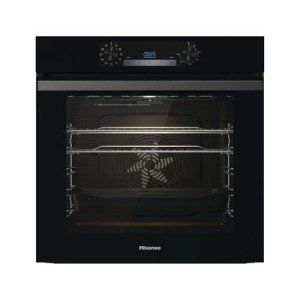The Rise of Integrated Cookers and Hobs: A Comprehensive Guide
In the modern-day kitchen, performance, style, and area optimization are key considerations for house owners and striving chefs alike. One of the most substantial trends in kitchen style is the increasing appeal of integrated cookers and hobs. These appliances not just improve the cooking experience however likewise elevate the aesthetic appeals of the kitchen space. This short article explores the attributes, benefits, features, and considerations surrounding integrated cookers and hobs, offering readers with a detailed understanding of their advantages.
What Are Integrated Cookers and Hobs?
Integrated cookers and hobs describe cooking appliances that are built into the kitchen cabinets, supplying a smooth appearance and taking full advantage of making use of area. Integrated appliances are created to blend with the visual of the kitchen instead of standing out like standard designs.
Kinds Of Integrated Cookers and Hobs
Usually, integrated cooking appliances consist of:
- Integrated Hobs: These are cooktops that fit flush into the kitchen counter top. They can be gas, electric, induction, or a mix of these innovations.
- Integrated Ovens: Built straight into the kitchen cabinetry, integrated ovens can come as single, double, or multifunctional designs, providing diverse cooking abilities.
- Mix Units: Some designs integrate an oven and hob into a single home appliance, offering a compact service for smaller cooking areas.
Benefits of Integrated Cookers and Hobs
1. Space Optimization
Integrated cookers and hobs are ideal for little kitchen areas. By embedding the cooking appliances into cabinetry, homeowners can use their kitchen area more effectively, leaving more space for meal preparation and motion.
2. Visual Appeal
These appliances offer a sleek and contemporary look to the kitchen. The capability to select finishes and integrate them into the surrounding kitchen cabinetry develops a unified style that improves the total appearance of the kitchen.
3. Enhanced Functionality
Integrated cookers and hobs frequently feature innovative technology functions, such as wise controls, timers, and cooking presets, improving user experience and making it possible for effective cooking.
4. Improved Safety
Numerous integrated hobs feature security procedures such as kid locks and automated shut-off features. This makes them much safer than standard freestanding models, especially in households with children.
5. Increased Resale Value
Modern homes with integrated appliances frequently attract greater resale worths. built in double oven and hob packages look for smooth styles and modern benefits, making integrated cooks and hobs a smart financial investment.
Features to Consider When Choosing Integrated Cookers and Hobs
When picking integrated cookers and hobs, several functions should be taken into consideration:
1. Cooking Technology
- Induction: Provides fast and effective cooking, simple to clean, and gives exact temperature level control.
- Gas: Offers conventional cooking advantages with instant heat but needs adequate ventilation.
- Electric: Provides constant heat and is offered in different styles.
2. Size and Configuration
- Oven Capacity: Should suffice for the home's cooking needs.
- Hob Size: Depending on the variety of burners/vessels required for synchronised cooking.
3. Control Mechanisms
- Touch Controls: Provide a streamlined look and ease of cleaning.
- Knob Controls: Offer tactile feedback and are easy to use.
4. Finish and Style
Integrated cookers and hobs come in various surfaces, consisting of stainless-steel, black glass, and even personalized alternatives to match cabinetry.
5. Energy Efficiency
Choose energy-efficient designs that can minimize energy costs and lower environmental impact.
Maintenance and Care
To maintain the efficiency and longevity of integrated cookers and hobs, routine upkeep is key:
- Clean the surfaces: Regularly clean down the hob and oven surfaces to prevent residue build-up.
- Inspect seals and gaskets: Ensure that oven seals are undamaged for effective cooking.
- Service routinely: Schedule expert upkeep to keep the appliances in top shape.
Frequently asked questions
1. What is the distinction in between built-in and integrated cookers?
Answer: Built-in cookers are developed to be set up within kitchen cabinetry, whereas integrated cookers are developed to perfectly blend with the kitchen cabinetry for a more cohesive look.
2. Are integrated appliances more pricey?
Response: Generally, integrated appliances might have a higher upfront expense compared to freestanding systems because of their design and the installation requirements. Nevertheless, they can offer long-term cost savings in energy efficiency.
3. Can I set up integrated cookers and hobs myself?
Answer: While some homeowners might have the ability to deal with the setup themselves, hiring an expert is suggested to ensure correct fit and function, particularly for gas appliances.
4. Are integrated integrated electric oven and hob and hobs easier to clean?
Response: Integrated hobs normally have fewer crevices, making them much easier to clean. Nevertheless, the particular cleansing requirements will depend on the products used in the appliance.
5. What should I check before acquiring?
Answer: Check the size of your kitchen space, cooking needs, energy effectiveness ratings, and compatibility with existing cabinetry.
Integrated cookers and hobs are ending up being increasingly favored in modern kitchens, combining functionality with aesthetic appeal. By comprehending their advantages, features, and maintenance requirements, property owners can make informed decisions when selecting the ideal appliances for their cooking spaces. As patterns in kitchen design continue to progress, integrated cooking services will likely remain at the forefront of home development, promising both practicality and design.

